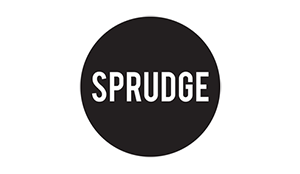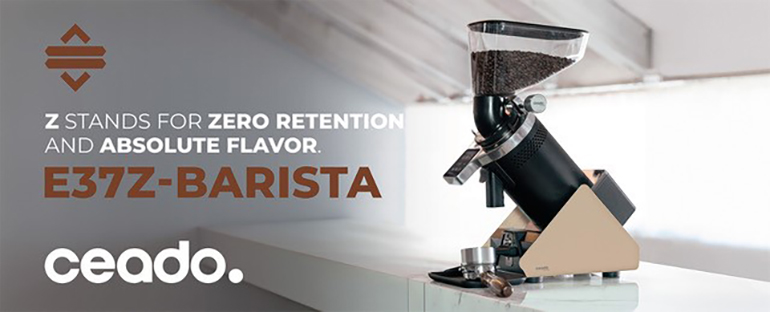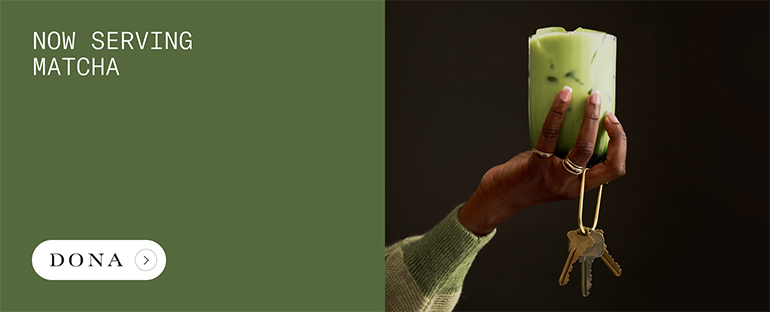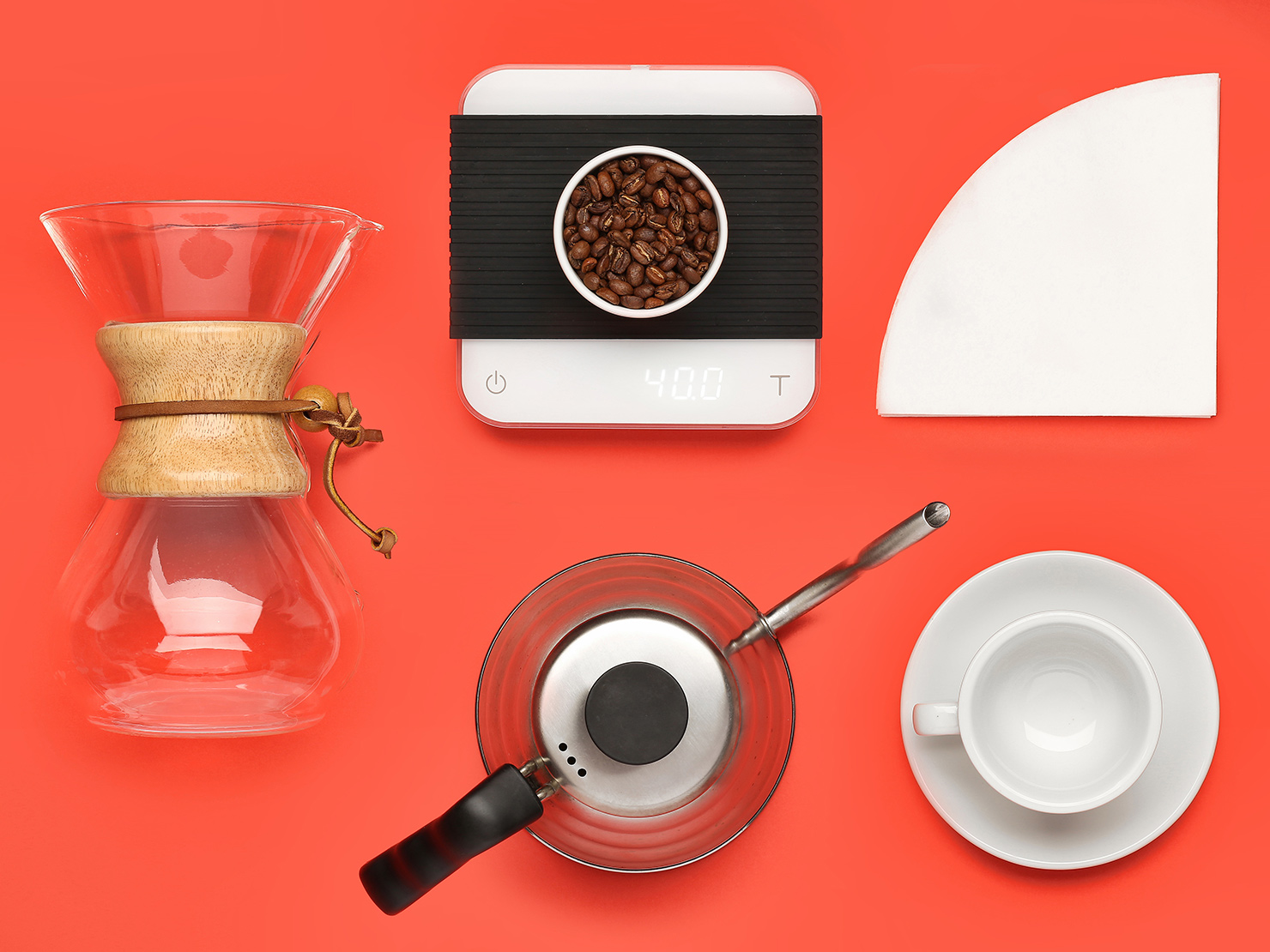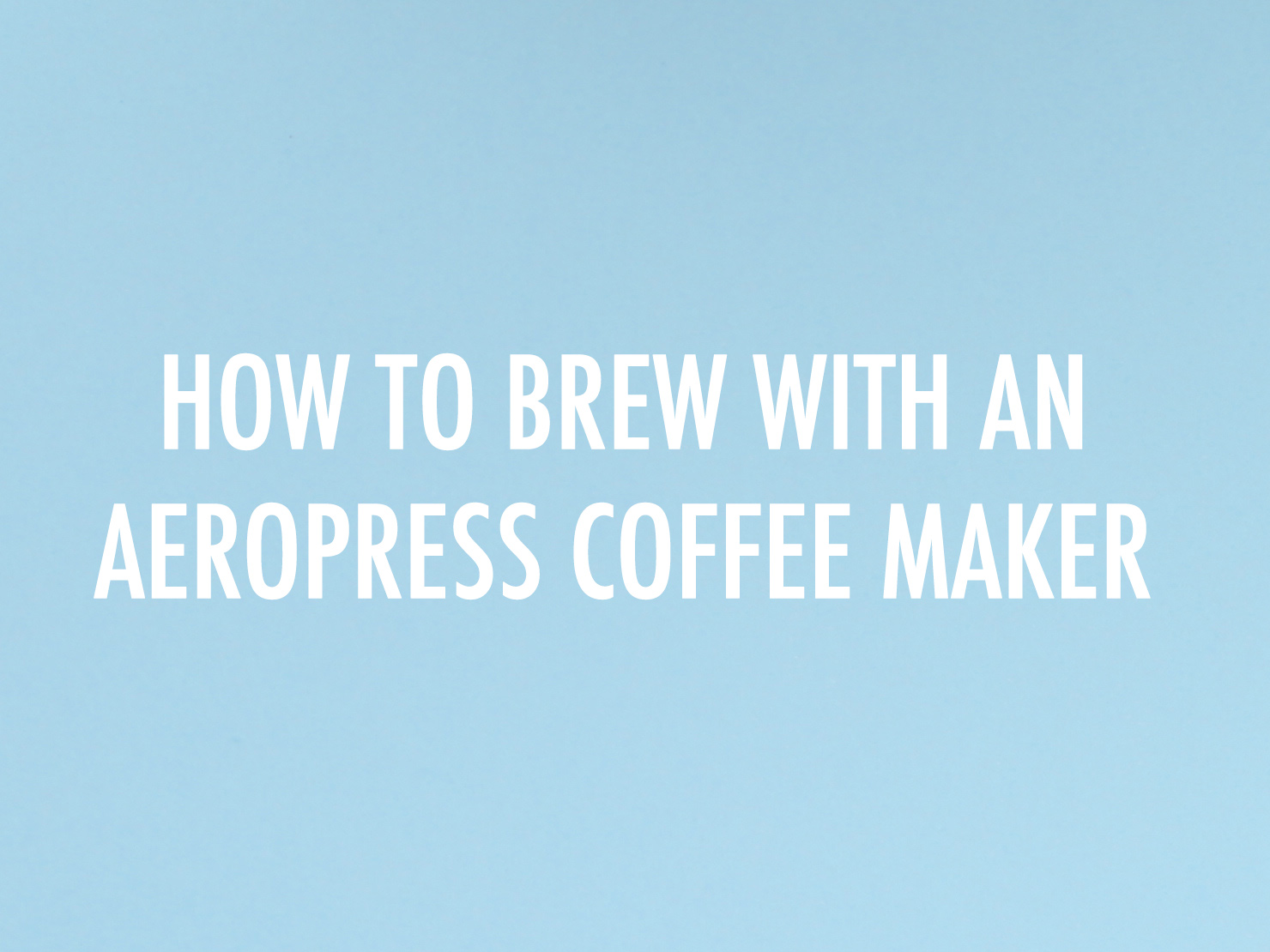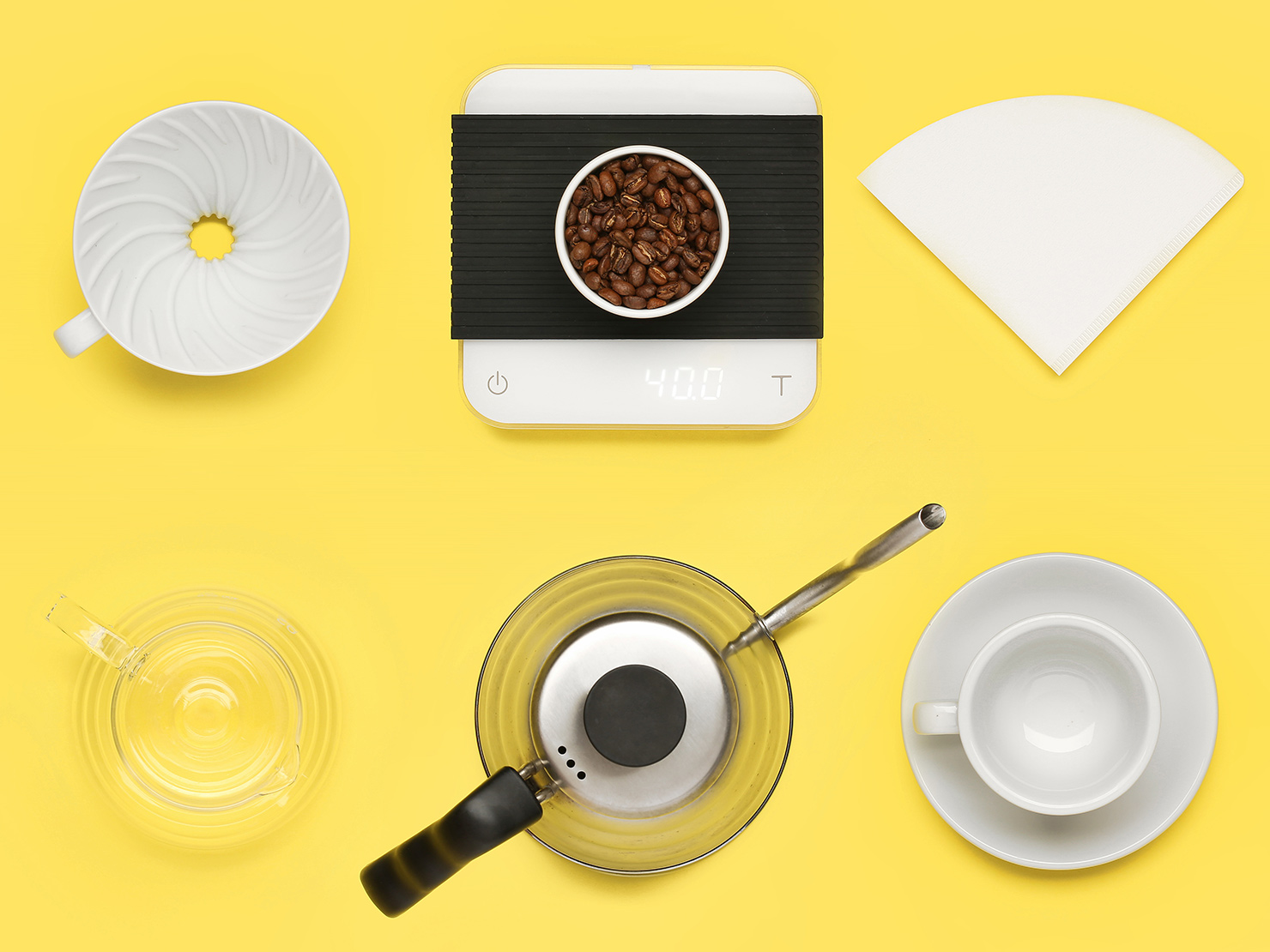
The coffee siphon (or vac-pot) experienced a renaissance among coffee professionals around 2007. In its heyday, baristas wielded siphons as they wielded portafilters: updosed, interpretively underextracted, and shrouded in a wizard’s cloak of theater and pocket science. While some cafes still offer siphons, it’s nowhere near as popular as it once was—but that doesn’t mean it’s not delightful and delicious!
There are plenty of variations on the siphon: Hario TCA-2, TCA-3, TCA-5, and related knockoffs with cloth or paper filters; Bodum varieties; Cony glass filter rod models and their antique predecessors. Today we are going to focus on the TCA-5 with a paper filter. Cloth filters are common, but given the effort that goes into making a siphon and cleaning it, using it often isn’t practical, so keeping a cloth filter in water in a ziplock is a practice that just hasn’t stood the test of time.
The siphon—still a hit at parties and a lot of fun to brew—so why not? Let’s make some siphon coffee!
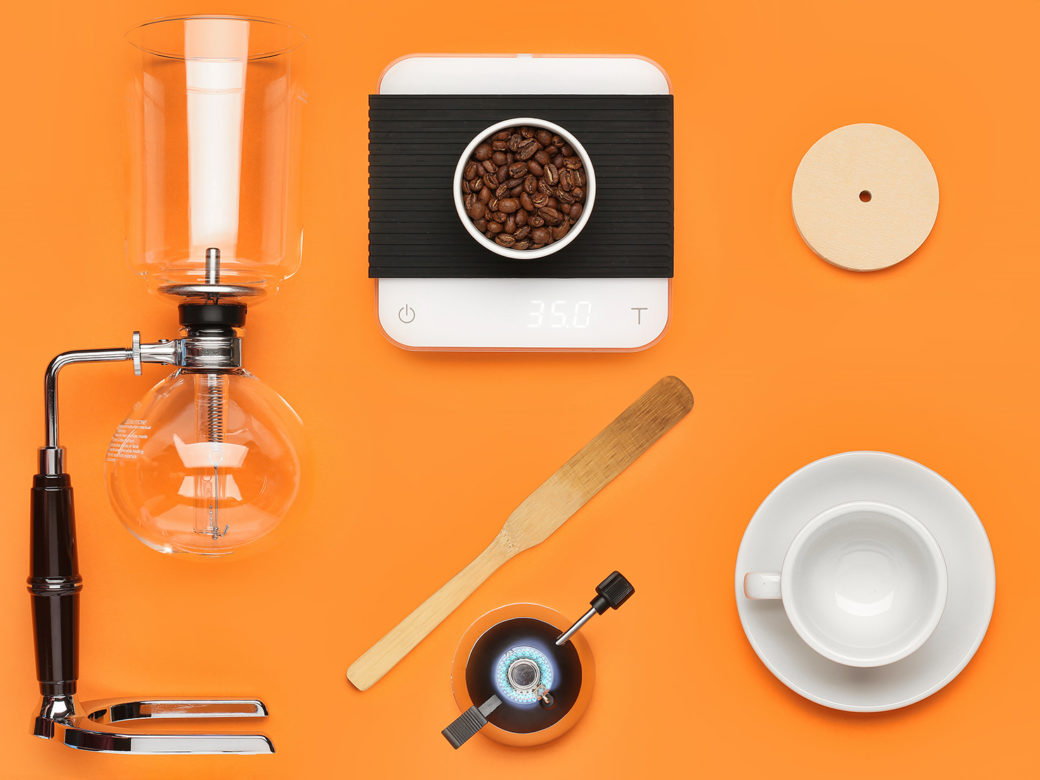
What you’ll need:
☑️ Siphon coffee maker
☑️ Siphon coffee filters
☑️ hot water
☑️ heat source (we use a butane torch)
☑️ cup
What’ll you’ll want to have:
☑️ decanter
☑️ coffee grinder
☑️ hot water kettle
☑️ coffee scale
☑️ thermometer
☑️ stopwatch
☑️ stirring device (we use a paddle in this guide)
Shop local—find a roaster selling gear in your area online. Don’t know where to start? Check out this map.
Step one:
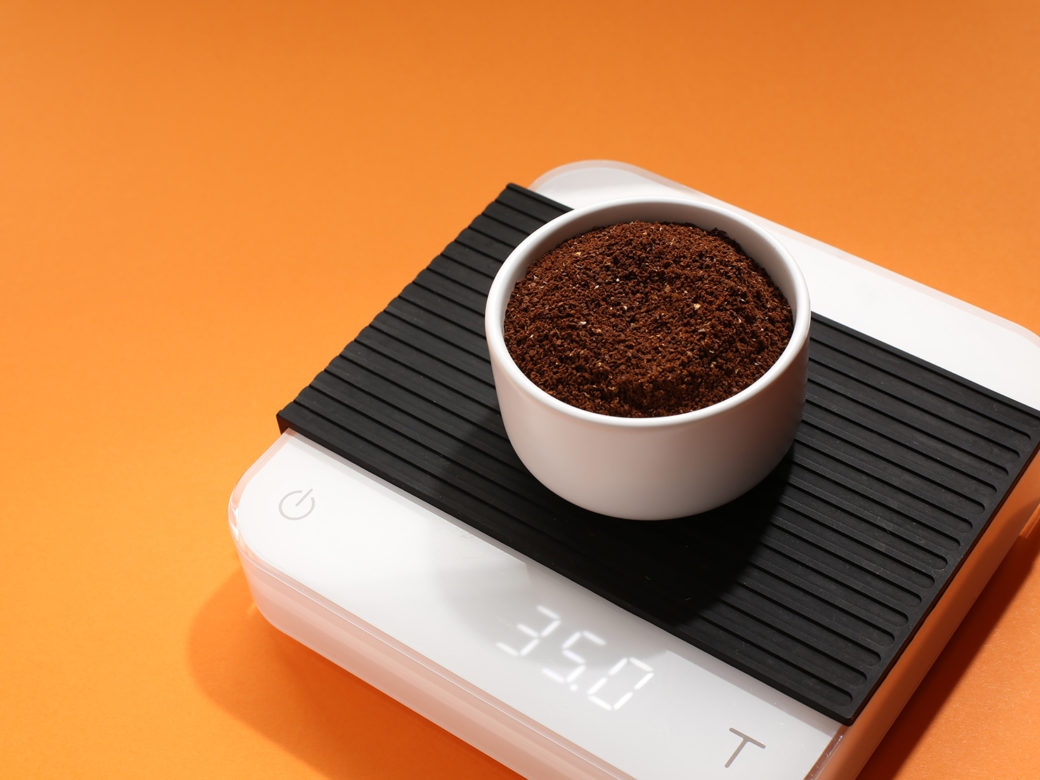
Measure out 35g of coffee and get your hot water going. Grind the coffee “medium,” like beach sand. Place the bottom globe onto a scale and measure out 560g of water. You can start from room-temperature water, but using a kettle to pre-heat the water is faster than heating the water up in the globe with the butane burner. Place the bottom globe over the burner and turn the burner on its highest setting. Meanwhile, assemble your paper filter retainer and run the assembly under some hot tap water to rinse the paper filter. Place the filter assembly into the upper chamber and secure it in place.
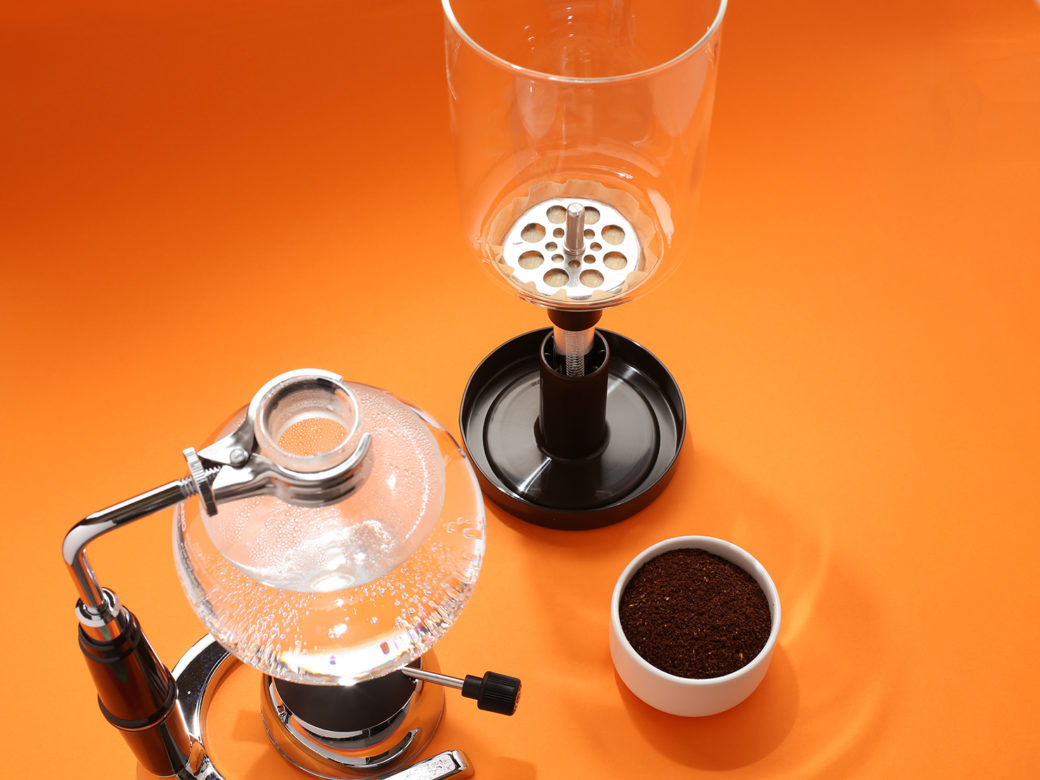
Step Two:
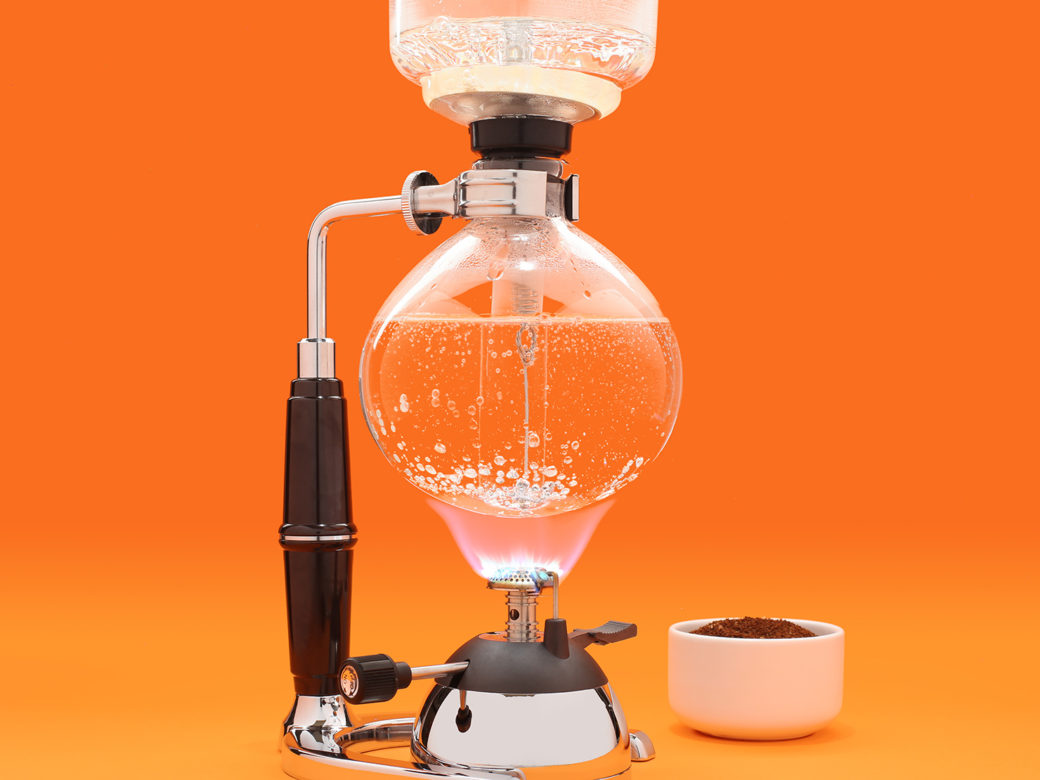
Once the water starts to approach a boil (small bubbles but not quite rolling), place the top chamber onto the bottom globe and ensure a good seal by twisting it into place.
Step three:
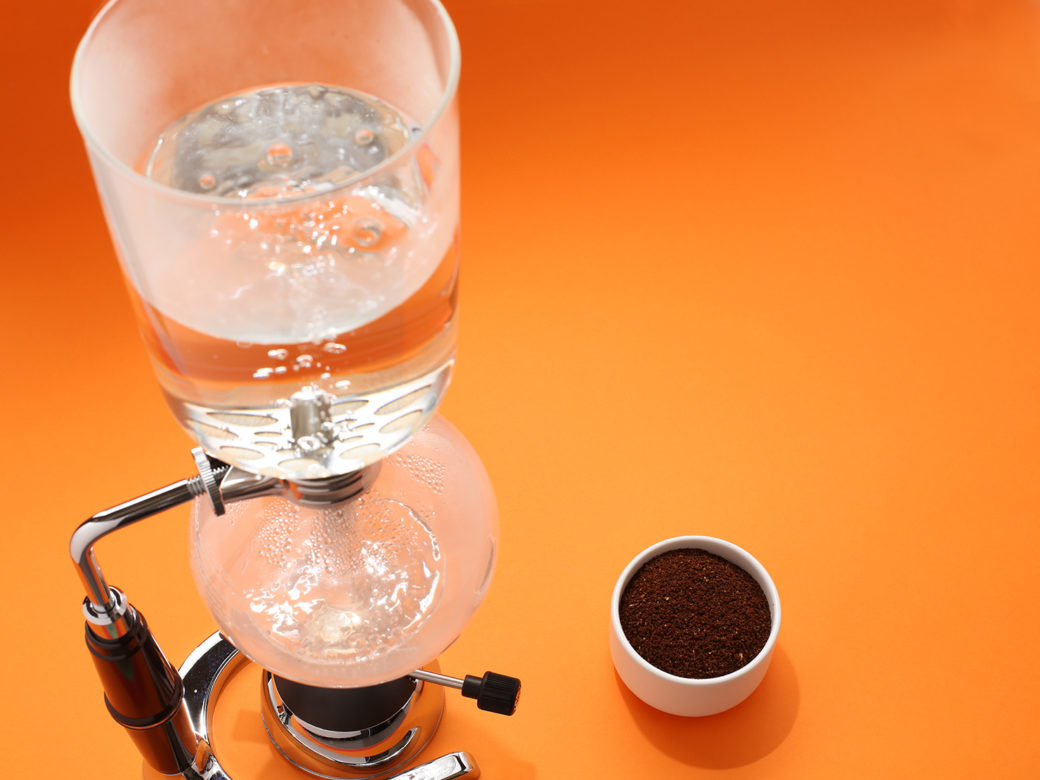
As the water begins to rise into the top globe, prepare to lower the temperature. Once the rising of the water accelerates and before it finishes rising, lower the heat considerably, until the flame is just visible. This should produce a brew water temperature close to 200ºF/93ºC.
Step four:
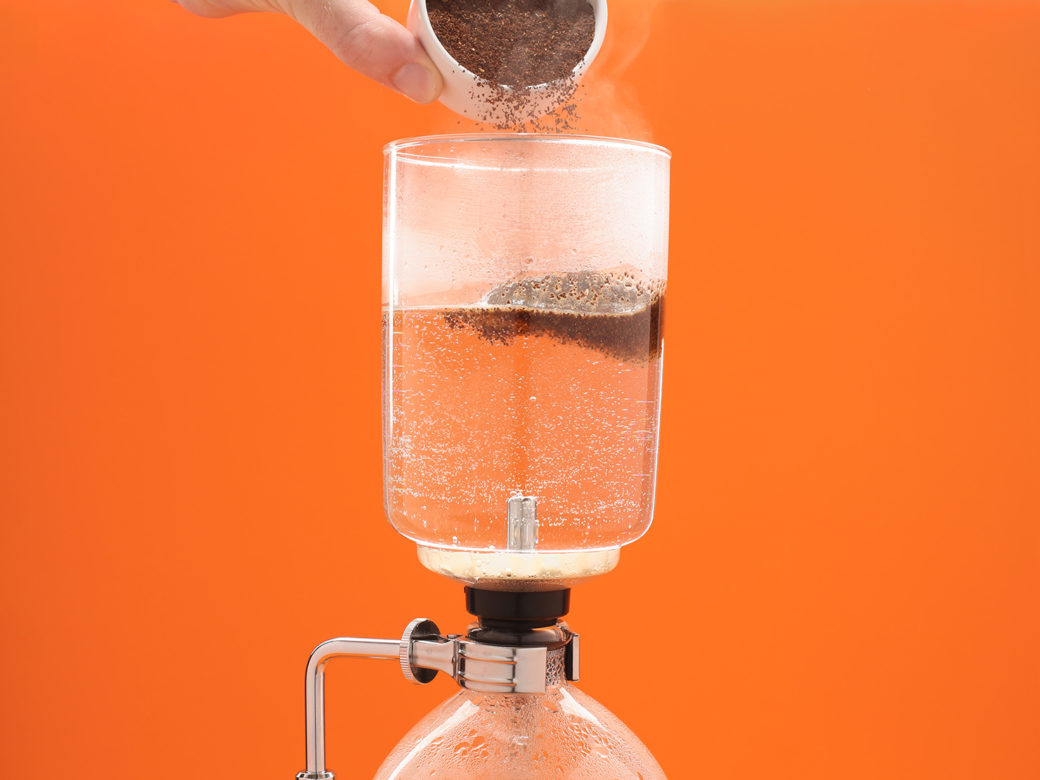
When the water has finished rising into the top chamber and the flame is situated to keep the water elevated, add the ground coffee and start your timer.
Step five:
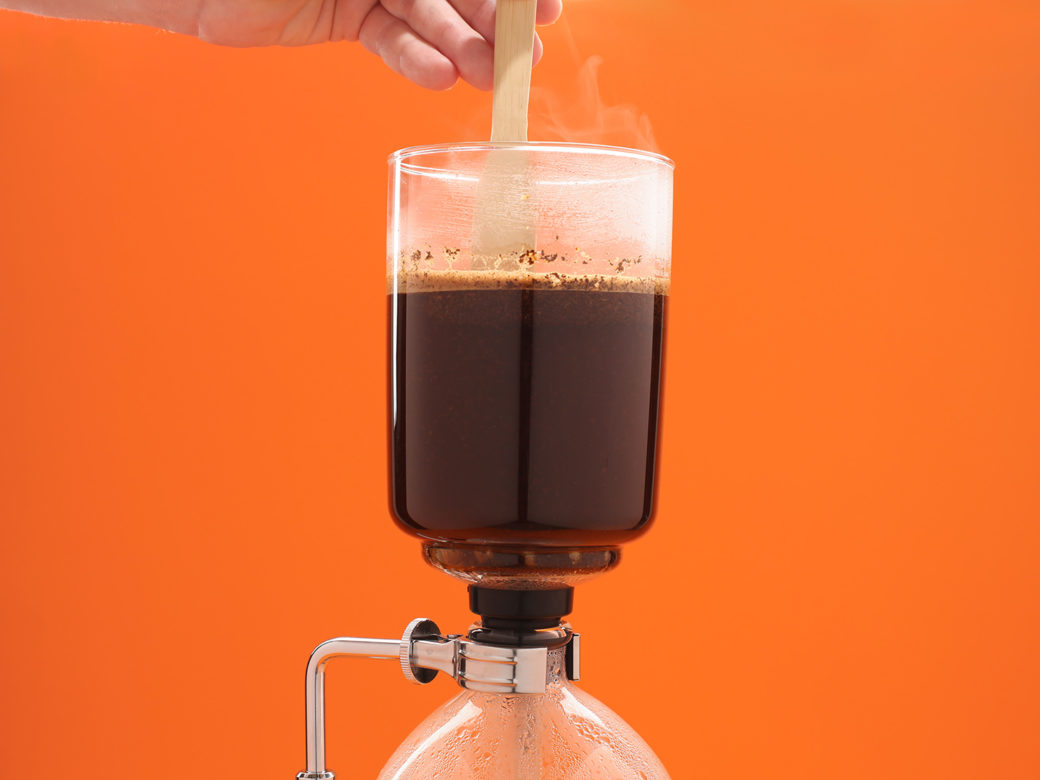
With a spoon or paddle, gently stir the coffee to fully saturate it. We prefer a back-and-forth gentle paddling, just enough to saturate it. After 00:30, give the crust of the coffee another gentle saturating stir.
Step Six:
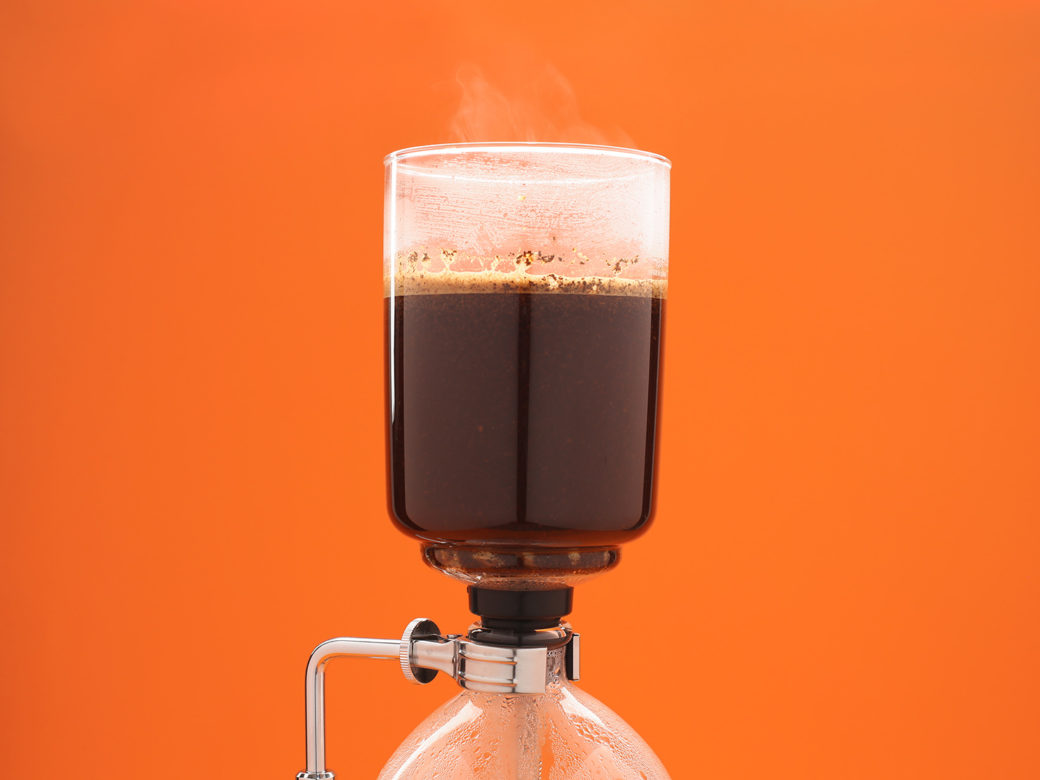
After 02:00, turn off the burner and completely remove it from under the siphon. After a short pause, the coffee will begin the drawdown. Don’t worry if it isn’t immediate. Once the coffee begins to draw down, give the coffee another gentle back-and-forth paddle. We prefer this to an aggressive stir which forms a dome out of the grinds. The total drawdown should take about a minute and a half. If these numbers don’t exactly add up, don’t stress. Taste the coffee and make appropriate adjustments to the grind based on taste rather than points in time.
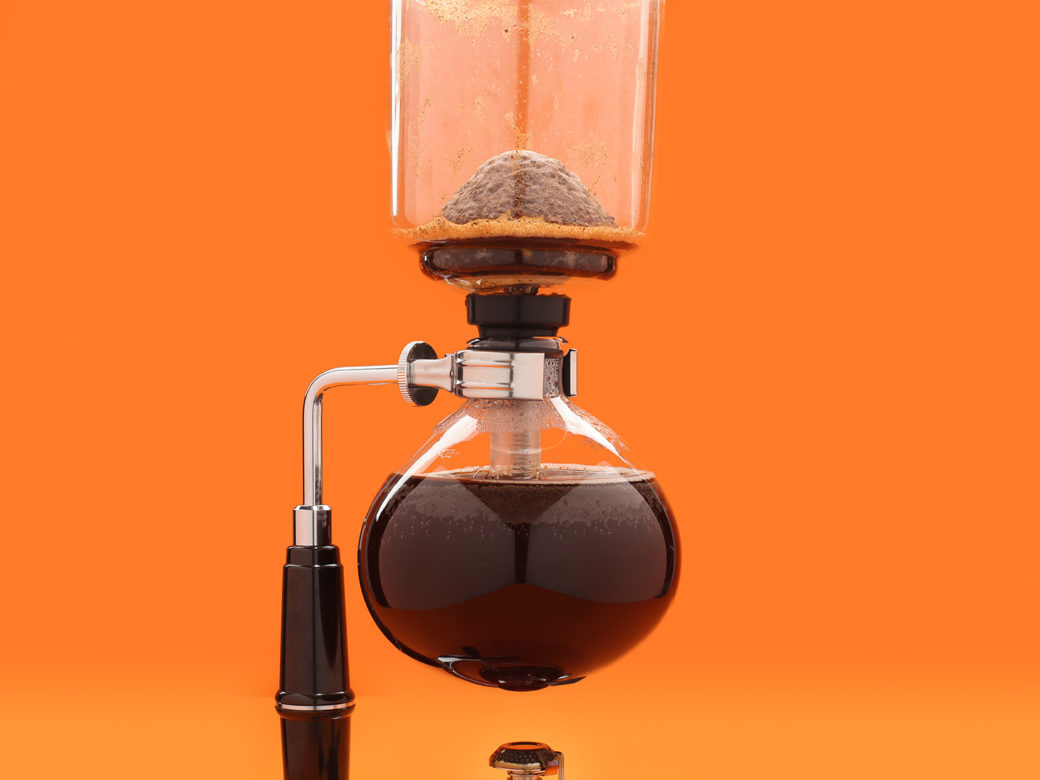 [wc_divider style=”solid” line=”single” margin_top=”” margin_bottom=”” class=””][/wc_divider]
[wc_divider style=”solid” line=”single” margin_top=”” margin_bottom=”” class=””][/wc_divider]
Most siphons come with some kind of spirit lamp, but we prefer to use the refillable butane tabletop cigar lighter type burners because they are adjustable and reliable.
The TCA-5 and similar sizes are specified to produce larger quantities of coffee, but closer to their actual capacity, the risk of stalling on the draw-down becomes greater and greater.
Approach a siphon as you would an AeroPress because it also offers a temperature-stable environment with the benefit of extraction time independent of gravity. Like the AeroPress, feel free to experiment with extraction time and grind once you have built up a confident routine.
Temperature management is a little more tricky. Certainly, an instant-read digital thermometer comes in handy to verify water temperature before ground coffee is added. Maintaining a higher flame through the extraction will create more steam that will elevate the temperature of the water in the brewing chamber. Attaching the globe too soon and turning the flame down too low too early may produce a temperature on the lower end of acceptable, but consider that the temperature will remain flat through the extraction, rather than a decline over time like a filter method. Our advice: stick with a program and adjust one variable at a time.
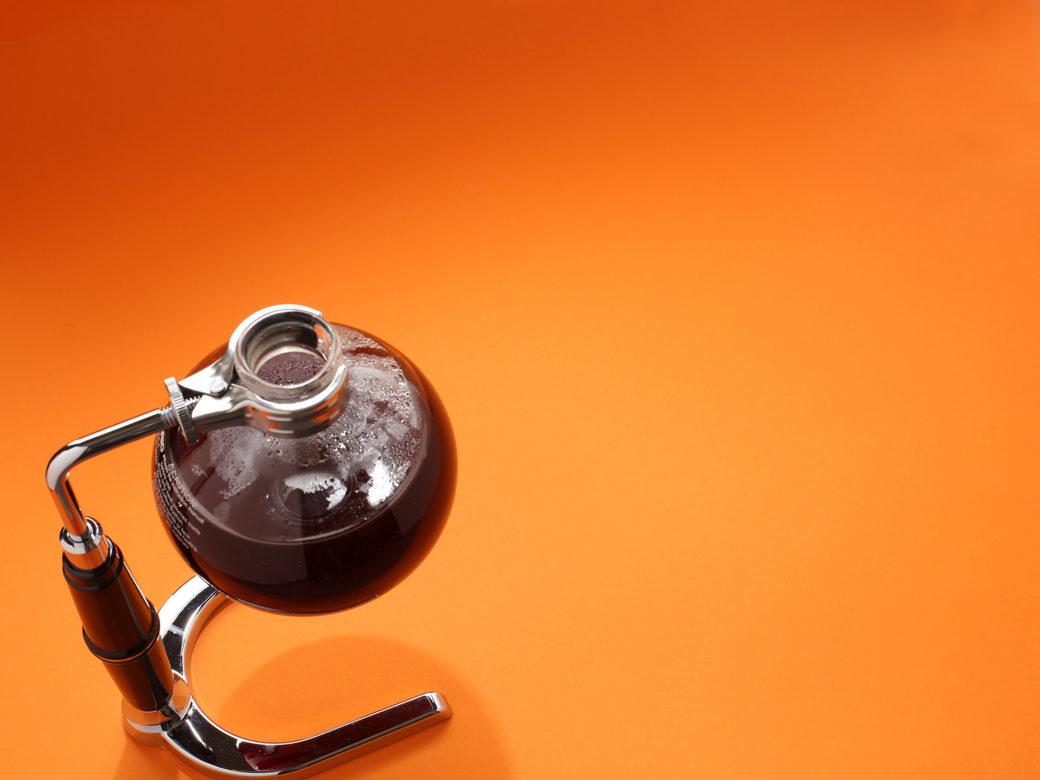
Sprudge brew guides utilize a brew ratio of 16:1 by weight, that is, for every 16 grams of water used, 1 gram of coffee is used. This is slightly more generous than the 60g/L standard recommended by the SCA, as 1000/16=62.5.
Grind measurements are given in subjective analogs, e.g. “like playground sand.” Communicating particle size effectively is near impossible, as grinder settings don’t translate universally. Ultimately, tasting and experience will illuminate the proper range of grinds for each brew method.
We specify a “bloom” of 30 seconds. Try a little longer if the coffee is really fresh.
Troubleshooting
The rate at which coffee extracts is influenced by a set of variables: surface area, water temperature, agitation, flow rate, and so forth. Once you get consistent, confident, and consistently confident, try to juggle the variables a bit: grind finer and use slightly cooler water. Grind coarser and let it steep longer. This balancing act ensures that there’s no single right way to do any of this… just use your noggin, but more importantly, use your taste to guide you.
Generally, if a coffee is thin, hollow, grassy, sour, lacks sweetness, it’s not extracted enough. The most effective way to correct this is to make the grind finer and keep everything else the same. If a brew is bitter, harsh, astringent, it’s over-extracted: next time, try coarsening up the grind.
Further Reading
Dogwood Coffee Siphon Brew Guide
Amavida Coffee Siphon Brew Guide
Equator Coffees Siphon Brew Guide
Partners Coffee Siphon Brew Guide
Intelligentsia Coffee Brew Guide
Do you have a siphon brew guide or video? Let us know!
Brew Videos
Matthew P. Williams contributed to this reporting. Photographs by Bryan Schiele.
